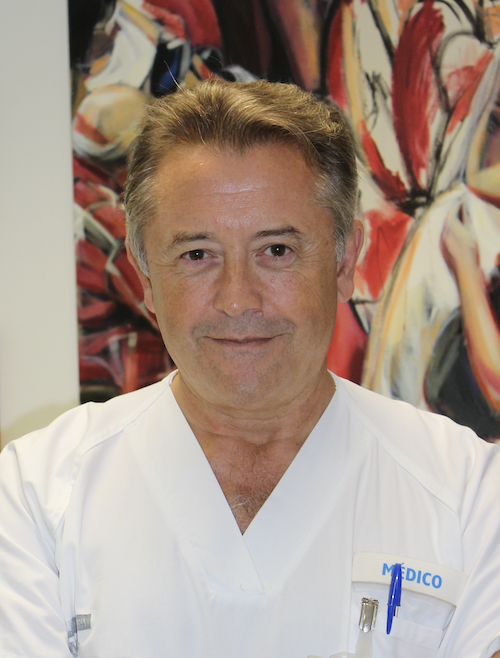
As the world moves towards development, the scope of medical advancements has significantly improved. With the diagnosis of complicated illnesses such as Cancer now possible, medical professionals are relying on technology in order to find treatments for such lethal diseases. Helping the world fight with such illnesses, certain dedicated institutions and doctors are working on the forefront, researching and looking for different technologies and treatments that could compliment medicine in any way possible.
Professor Luis Martí-Bonmatí, the Director of the Biomedical Imaging Research Group at La Fe Health Research Institute in Valencia, is amongst the committed doctors trying to improve the cancer management process by providing innovative steps through Artificial Intelligence (AI). As the medical world evolves, modern technology has taken over the entire field. By taking advantage of the AI solutions, Professor Martí-Bonmatí has seen potential in the technology. He is currently working towards making AI more effective in the field of medical imaging.
Commitment Towards His Field
Even with the current technology for detecting cancerous cells, most cancers go undetected or poorly characterized. Addressing this issue, AI programs have been introduced to observe the earliest slightest change in the organ structure that can later turn into aggressive cancerous tissue, helping treat a yet to develop disease. While being the Chairman of the Medical Imaging Department, Hospital Universitario y Politécnico de La Fe, Prof. Martí-Bonmatí, along with his team, is playing his part in enhancing image repositories, digital twins in silico emulated trials, deep features, image preparation, data harmonization, radiomics, and open-source approaches.
In 1983, Prof. Martí-Bonmatí graduated from the University of Valencia with undergraduate medical training. He completed his residency in 1987 from the La Fe University Hospital Valencia. With his aim always directed towards bringing medical advancements, he chose 'MRI in the study and characterization of focal liver lesions' as his Ph.D. thesis topic.
As a result of his hard work and devotion to the field, in 1990, Prof. Martí-Bonmatí received his doctorate with excellence from the University of Valencia. He is currently the acting director of the Imaging La Fe node at Distributed Network for Biomedical Imaging (ReDIB) Unique Scientific and Technical Infrastructures (ICTS), Valencia, Spain.
With the aid of his expertise in the medical field, Prof. Martí-Bonmatí has been coordinating several prominent European projects such as PRIMAGE and Chaimeleon. Being a renowned personality in medicine and academics has enabled him to become an acting partner of the ProCancer-I and PerProGlio European projects in oncologic imaging, radiomics, and artificial intelligence.
For every medical field, the aspect of research holds the most value. When it comes down to medicine, a plethora of research is required to take even the slightest step in treatments. Prof. Martí-Bonmatí also acts as a researcher whose interests are highly concentrated in abdominal and pelvic MRI, imaging biomarkers, computational imaging, artificial intelligence, open imaging repositories, and several others. His curiosity about the field acts as a propeller to apply his skills to the field and bless the scientific community with his innovative ideas.
Due to his diligence and known expertise, Prof. Martí-Bonmatí was serving as the European Society of Radiology Research Committee Chairman. As a result of his commitment to everything he does, he is one of the most involved members of the European Society of Gastrointestinal and Abdominal Radiology and the European Society of Magnetic Resonance Imaging in Medicine and Biology, being President of both, which highly aligns with his interests.
Taking His Profession To Another Level
Besides his notable work in the medical field, Prof. Martí-Bonmatí is also well-known as a published author. While being on top in the medical sciences' literary world, Prof. Martí-Bonmatí has authored many scientific books such as "Imaging Biomarkers: Development and Clinical Integration," "Research in a Radiology Department," "The Final step: imaging biomarkers in structured reports," Imaging Biomarkers. Development and clinical integration" and several others.
As a result of having a knack for giving back to the community, Prof. Martí-Bonmatí has written more than 290 articles that have been published on the platform of PUBMED. He has additionally supervised Ph.D. researches of more than twenty students, adding to his portfolio of academics. Other than that, he is also the Editor-in-Chief of the prestigious open-source journal Insights into Imaging.
Prof. Martí-Bonmatí has put his heart and soul into the field he has pursued and doesn't let go of any opportunity that has the scope of providing him with more experience. Complimenting his medical portfolio, Prof. Martí-Bonmatí is also a full member of the Spanish National Royal Academy of Medicine. His experience in the profession has made him stand out amongst the individuals belonging to the same field. Other than that, he has founded the QUIBIM S.L. and currently performs duties as its Director of Scientific Advisory Board, promoting advance and innovative image processing techniques for better human health.
Captivating the healthcare industry, AI solution has been a blessing in today's time. As a valuable asset to medicine, it has proved to be a safe and effective way to improve cancer evaluation by medical imaging. Prof. Martí-Bonmatí has portrayed an improved disease understanding and has utilized the opportunity that the technology has made possible. While reflecting upon his achievements and contributions to the medical field, it is safe to say Prof. Martí-Bonmatí has created a legacy for himself that will be remembered for a long time to come.
* This is a contributed article and this content does not necessarily represent the views of techtimes.com








